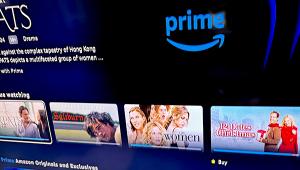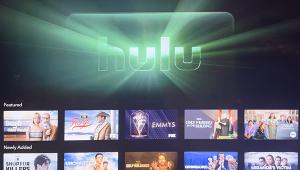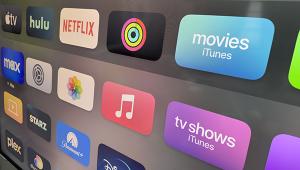Year-End Review: 2012 Streaming Video Innovations

At the start of 2012, home theater enthusiasts told me streaming would never replace their library of Blu-ray discs and DVDs and complained that there wasn't enough high-def content to watch. As this year comes to a close, more content is available for streaming than ever before, even though the AVSForum.com is abuzz with complaints that the 1080p movies on Netflix seemed to be downgraded (they weren't). It may be a while before streaming rivals that of watching a Blu-ray Disc, but the experience is steadily improving.
UltraViolet is aligned with a number of movie studios and continues to grow. For $2 per movie, you can add digital copies of discs you own to an UltraViolet cloud locker using Disc-to-Digital services. The service was introduced by Walmart, which acquired the Vudu streaming service and made it possible to stream UltraViolet movies to any device that has a Vudu, Flixster, or Cinema Now app. Samsung Blu-ray players can authenticate discs so digital copies can be added to your UltraViolet locker and Best Buy's Cinema Now service lets you create digital copies of discs you own from a home computer. Our movie collections have been unleashed.
This was the year that Microsoft realized the importance of streaming video and added Netflix, HBO Go and the new Xbox video rental service to its Xbox 360 game console. If it isn't enough that the Xbox is loaded with services, finding a title is now as easy as saying "Bing (search) Dark Knight" and seeing a list of services through which it is available. In addition to online streaming, Xbox 360 can stream live TV events and includes the Xfinity app to stream Comcast TV and a FiOS app from Verizon.
The 2012 Olympics were a breakthrough in live TV streaming. Hundreds of hours were streamed with entire events shown in real time. For the first time, viewers were able to experience the Olympics on a mobile device wherever and whenever it was convenient.
Nintendo decided to get in on the streaming video action in 2012 and released its new video game console, the Wii U, with "TVii." The promise of TVii is to integrate cable-, satellite-, or telco-delivered content with video streaming services such as Netflix, Hulu Plus, and Amazon on Demand. The Wii U's 7-inch tablet-like controller also doubles as a TV remote (and soon for your set top box) and can function as a tablet on which you can watch movies and play games or call up "second-screen" content to supplement what you're watching on TV.
"Second screen" became the catch phrase for using a tablet or smartphone to display cast and crew lists, movie trivia and clips about the movie or TV show you are watching on TV. While most second-screen experiences are still limited to cast and crew lists and IMDB facts, enhanced content is becoming available for more movie titles—a trend that will continue in 2013.
Tablets and smartphones are now being used for more than just playing content. In 2012, it became popular to "throw" photos or videos from a smartphone, tablet, or Wi-Fi-enabled camera onto the big screen. With the flick of a finger, media is displayed wirelessly on compatible Smart TVs, media players, and devices like Slingbox.
Smartphones and tablets have also become a more important part of the home theater experience as they morph into remote controls. Forget traditional IR and RF remotes. Smart TVs from Samsung, Toshiba, LG, and Sony and media players from Boxee, Roku, NETGEAR, and WD TV can all be controlled wirelessly over a home network via remote apps. These apps even include a keyboard that makes it easy to search for content, Tweet or post on Facebook.
2012 will also be remembered as the year live TV streaming came into its own. The Simple.TV box streams live or recorded basic cable or over the air broadcasts to a Roku player, iPhone, or iPad. The Slingbox app turns a Boxee Box into a virtual second room cable box. And TV service providers—including Comcast, Time Warner, DISH, DirecTV and Verizon FiOs—finally recognized that other devices can be used to access cable and satellite programming.
As we head in to 2013, streaming devices continue to shrink. Roku's Streaming Stick packs streaming smarts into a thumb-drive-size device that plugs into an HDMI port on your TV. No need to make room for a box.
Finally, Google TV returned in the form of stand-alone players from Vizio and Sony. While these players may not be able to access all services, they can present a personalized grid of recommended movies currently playing and make it easy to search both live TV and online services for the programming you want to watch. Indeed, 2012 brought us a long list of streaming innovations, paving the way for even more innovation in 2013. Stay tuned for our reports from the Consumer Electronics Show, which kicks off on January 8.






























































